ELAR 1.2
Developing and sustaining foundational language skills: listening, speaking, reading, writing, and thinking--beginning reading and writing. The student develops word structure knowledge through phonological awareness, print concepts, phonics, and morphology to communicate, decode, and spell. The student is expected to:
- (1) demonstrate phonological awareness by:
- (A) producing a series of rhyming words;
- (i) recognizing spoken alliteration or groups of words that begin with the same spoken onset or initial sound;
- (ii) distinguishing between long and short vowel sounds in one-syllable words;
- (iii) recognizing the change in spoken word when a specified phoneme is added, changed, or removed;
- (iv) blending spoken phonemes to form one-syllable words, including initial and/or final consonant blends;
- (v) manipulating phonemes within base words; and
- (vi) segmenting spoken one-syllable words of three to five phonemes into individual phonemes, including words with initial and/or final consonant blends;
- (vii) demonstrate and apply phonetic knowledge by:
- (B) decoding words in isolation and in context by applying
common letter sound correspondences;
- (i) decoding words with initial and final consonant blends, digraphs, and trigraphs;
- (ii) decoding words with closed syllables; open syllables; VCe syllables; vowel teams, including vowel digraphs and diphthongs; and r-controlled syllables;
- (iii) using knowledge of base words to decode common compound words and contractions;
- (iv) decoding words with inflectional endings, including -ed, -s, and -es; and
- (v) identifying and reading at least 100 high-frequency words from a research-based list;
- (vi) demonstrate and apply spelling knowledge by:
- (C) spelling words with closed syllables, open syllables,
VCe syllables, vowel teams, and r-controlled syllables;
- (i) spelling words with initial and final consonant blends, digraphs, and trigraphs;
- (ii) spelling words using sound-spelling patterns; and
- (iii) spelling high-frequency words from a research-based list;
- (iv) demonstrate print awareness by identifying the information that different parts of a book provide;
- (D) alphabetize a series of words to the first or second letter and use a dictionary to find words; and
- (E) develop handwriting by printing words, sentences, and answers legibly leaving appropriate spaces between words.
- (A) producing a series of rhyming words;
- Plus Plan
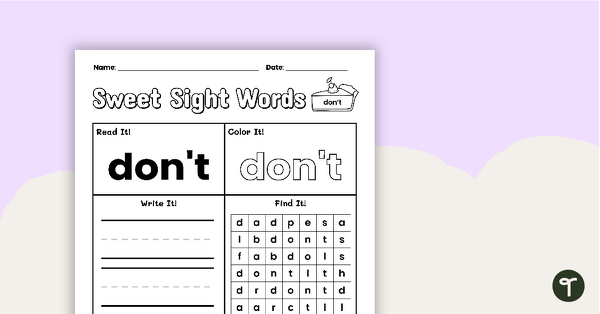
Sweet Sight Words Worksheet - DON'T
Practice reading, writing, and identifying the high-frequency word “don’t” from the Second Grade Dolch sight words list.
- Plus Plan
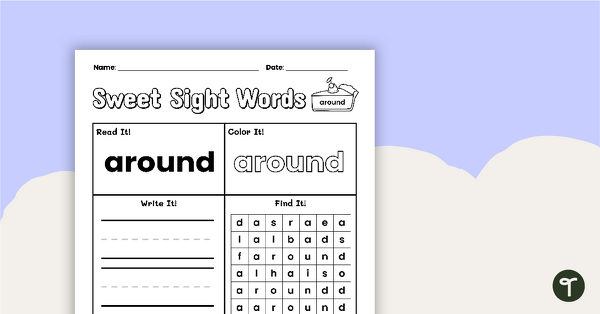
Sweet Sight Words Worksheet - AROUND
Practice reading, writing, and identifying the high-frequency word “around” from the Second Grade Dolch sight words list.
- Plus Plan
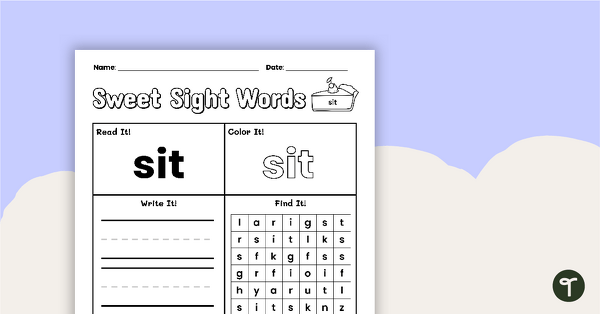
Sweet Sight Words Worksheet - SIT
Practice reading, writing, and identifying the high-frequency word “sit” from the Second Grade Dolch sight words list.
- Plus Plan
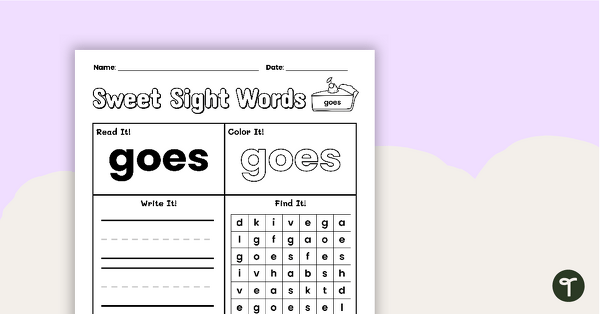
Sweet Sight Words Worksheet - GOES
Practice reading, writing, and identifying the high-frequency word “goes” from the Second Grade Dolch sight words list.
- Plus Plan
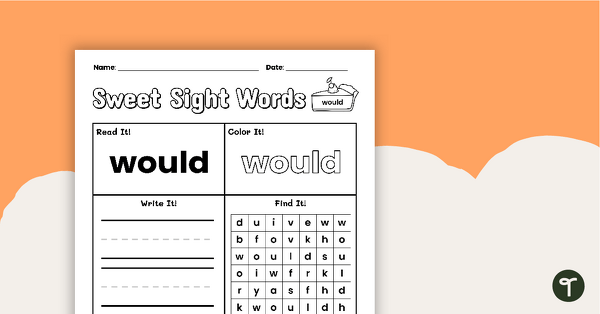
Sweet Sight Words Worksheet - WOULD
Practice reading, writing, and identifying the high-frequency word “would” from the Second Grade Dolch sight words list.
- Plus Plan
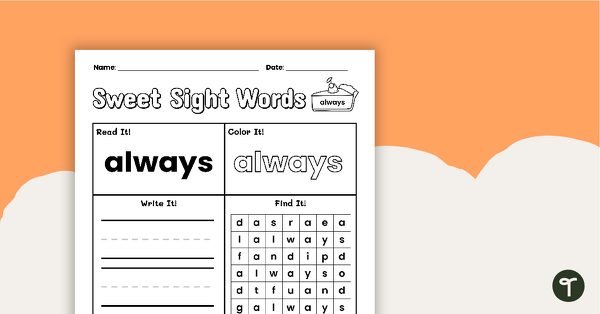
Sweet Sight Words Worksheet - ALWAYS
Practice reading, writing, and identifying the high-frequency word “always” from the Second Grade Dolch sight words list.
- Plus Plan
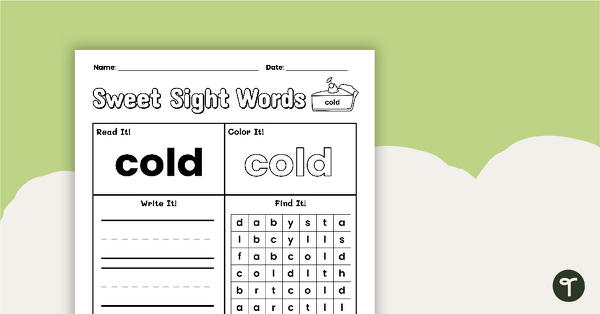
Sweet Sight Words Worksheet - COLD
Practice reading, writing, and identifying the high-frequency word “cold” from the Second Grade Dolch sight words list.
- Plus Plan

Sight Word Mini Books
A set of 12 mini sight word books to use as little readers with your students.
- Plus Plan
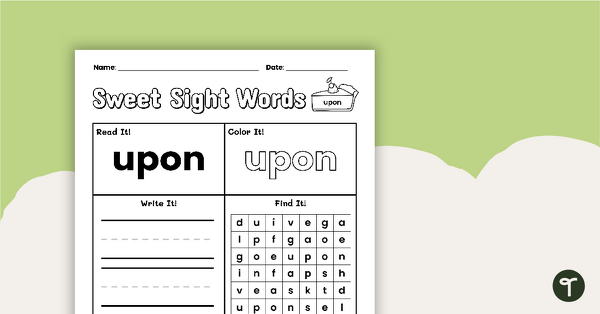
Sweet Sight Words Worksheet - UPON
Practice reading, writing, and identifying the high-frequency word “upon” from the Second Grade Dolch sight words list.
- Plus Plan
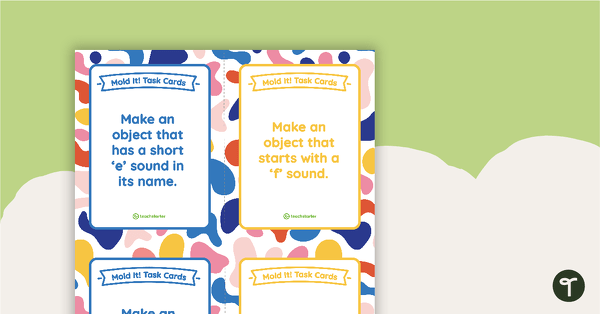
Mold It! Task Cards
A set of 28 task cards to use with modeling clay.
- Plus Plan

Sweet Sight Words Worksheet - WHY
Practice reading, writing, and identifying the high-frequency word “why” from the Second Grade Dolch sight words list.
- Plus Plan
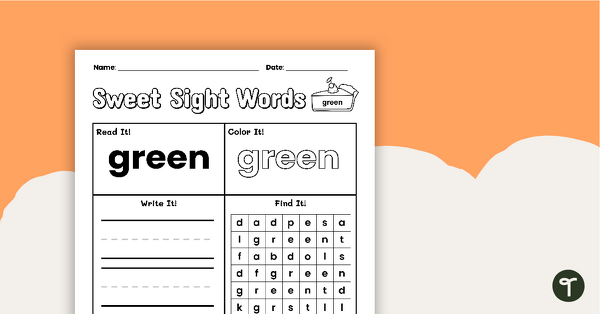
Sweet Sight Words Worksheet - GREEN
Practice reading, writing, and identifying the high-frequency word “green” from the Second Grade Dolch sight words list.
- Plus Plan

Sweet Sight Words Worksheet - READ
Practice reading, writing, and identifying the high-frequency word “read” from the Second Grade Dolch sight words list.
- Plus Plan
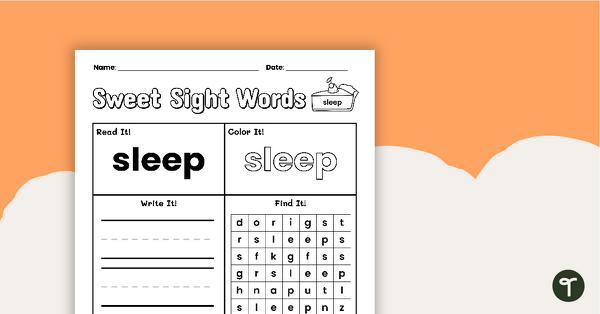
Sweet Sight Words Worksheet - SLEEP
Practice reading, writing, and identifying the high-frequency word “sleep” from the Second Grade Dolch sight words list.
- Plus Plan
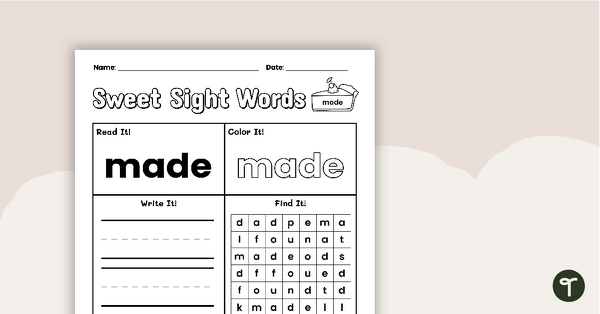
Sweet Sight Words Worksheet - MADE
Practice reading, writing, and identifying the high-frequency word “made” from the Second Grade Dolch sight words list.
- Plus Plan
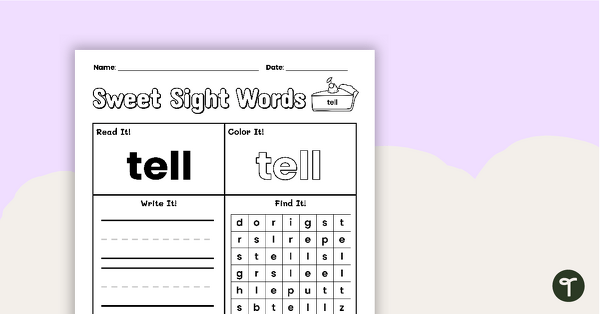
Sweet Sight Words Worksheet - TELL
Practice reading, writing, and identifying the high-frequency word “tell” from the Second Grade Dolch sight words list.
- Plus Plan

Sweet Sight Words Worksheet - GAVE
Practice reading, writing, and identifying the high-frequency word “gave” from the Second Grade Dolch sight words list.
- Plus Plan
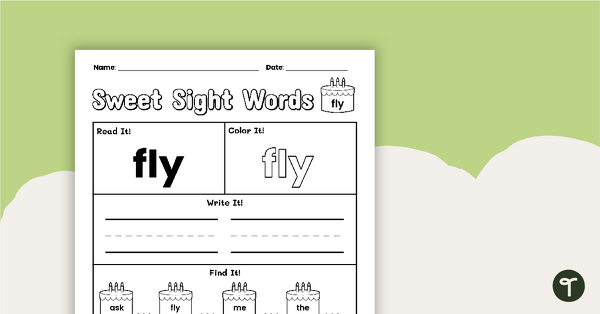
Sweet Sight Words Worksheet - FLY
Practice reading, writing, and identifying the high-frequency word “fly” from the First Grade Dolch sight words list.
- Plus Plan
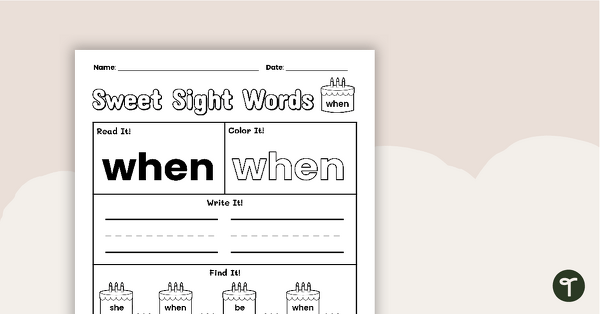
Sweet Sight Words Worksheet - WHEN
Practice reading, writing, and identifying the high-frequency word “when” from the First Grade Dolch sight words list.
- Plus Plan
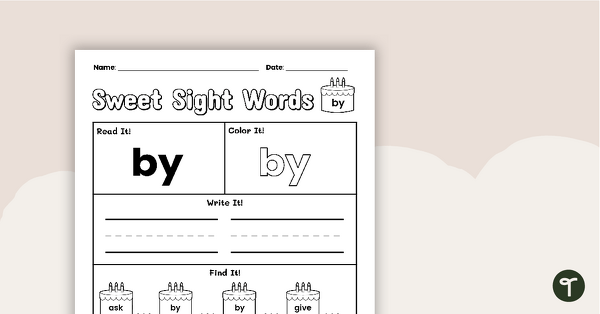
Sweet Sight Words Worksheet - BY
Practice reading, writing, and identifying the high-frequency word “by” from the First Grade Dolch sight words list.
- Plus Plan
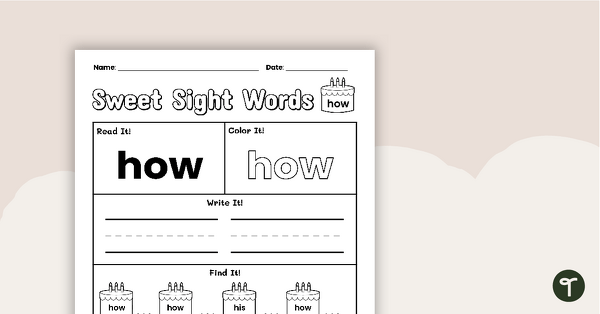
Sweet Sight Words Worksheet - HOW
Practice reading, writing, and identifying the high-frequency word “how” from the First Grade Dolch sight words list.
- Plus Plan
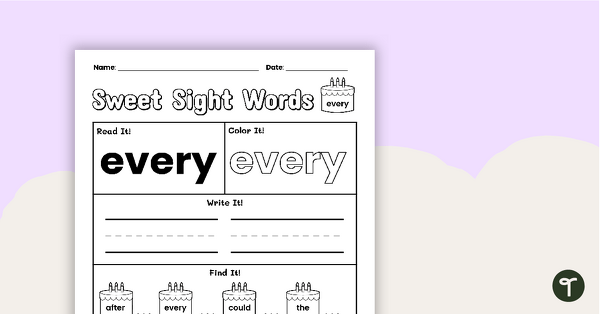
Sweet Sight Words Worksheet - EVERY
Practice reading, writing, and identifying the high-frequency word “every” from the First Grade Dolch sight words list.
- Plus Plan
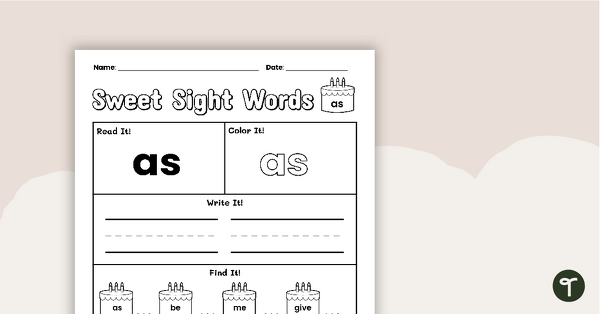
Sweet Sight Words Worksheet - AS
Practice reading, writing, and identifying the high-frequency word “as” from the First Grade Dolch sight words list.
- Plus Plan

Sweet Sight Words Worksheet - AGAIN
Practice reading, writing, and identifying the high-frequency word “again” from the First Grade Dolch sight words list.
- Plus Plan
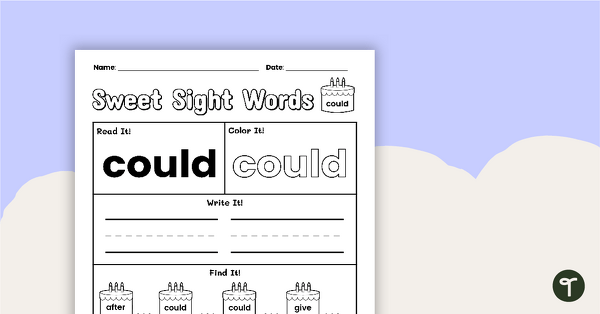
Sweet Sight Words Worksheet - COULD
Practice reading, writing, and identifying the high-frequency word “could” from the First Grade Dolch sight words list.
- Plus Plan
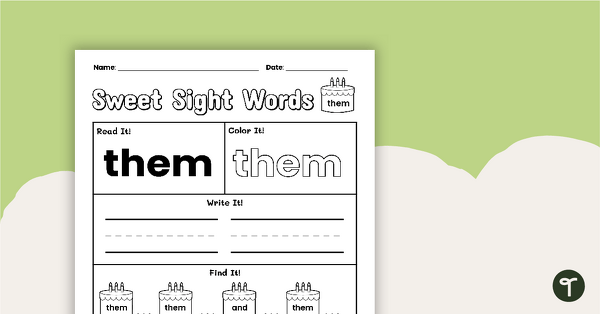
Sweet Sight Words Worksheet - THEM
Practice reading, writing, and identifying the high-frequency word “them” from the First Grade Dolch sight words list.
- Plus Plan
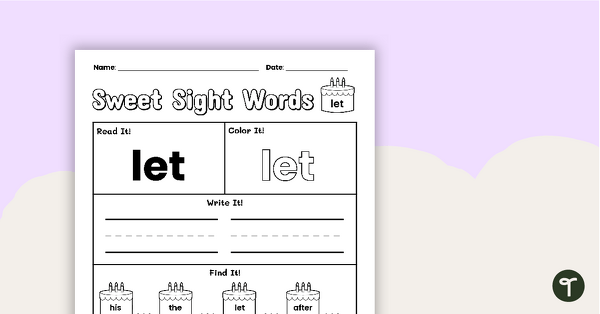
Sweet Sight Words Worksheet - LET
Practice reading, writing, and identifying the high-frequency word “let” from the First Grade Dolch sight words list.
- Plus Plan
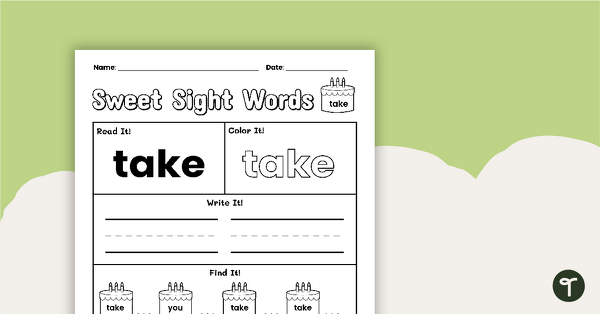
Sweet Sight Words Worksheet - TAKE
Practice reading, writing, and identifying the high-frequency word “take” from the First Grade Dolch sight words list.
- Plus Plan

Sweet Sight Words Worksheet - OPEN
Practice reading, writing, and identifying the high-frequency word “open” from the First Grade Dolch sight words list.
- Plus Plan
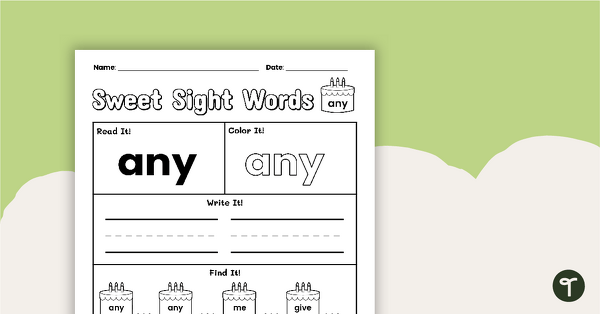
Sweet Sight Words Worksheet - ANY
Practice reading, writing, and identifying the high-frequency word “any” from the First Grade Dolch sight words list.
- Plus Plan
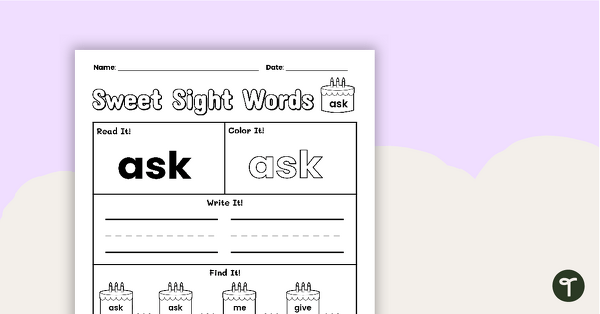
Sweet Sight Words Worksheet - ASK
Practice reading, writing, and identifying the high-frequency word “ask” from the First Grade Dolch sight words list.
- Plus Plan
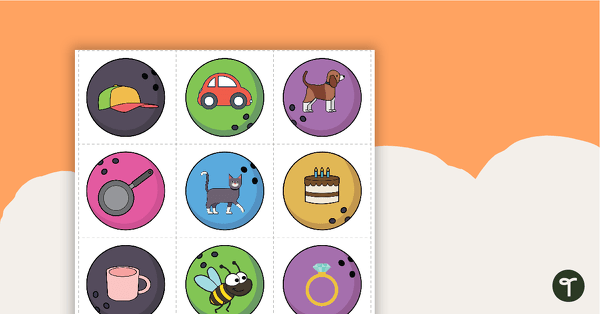
Bowling Game - Rhyming Words
Practice matching rhyming words with this set of 24 picture bowling ball cards and pins.